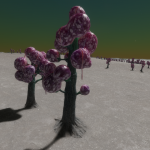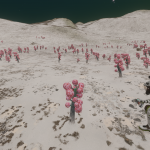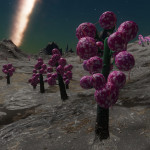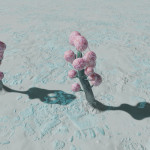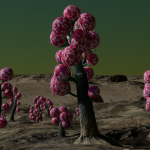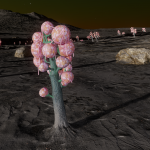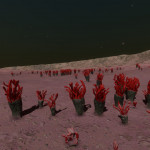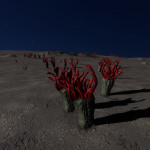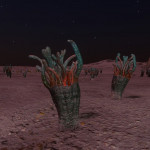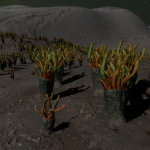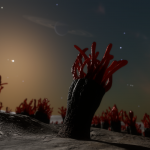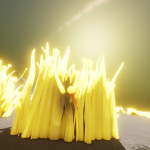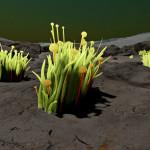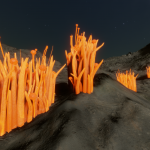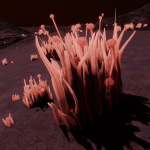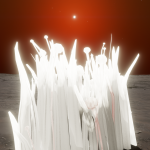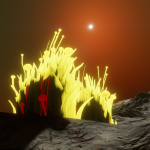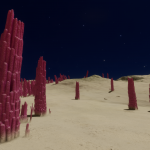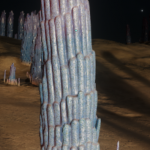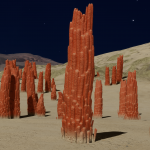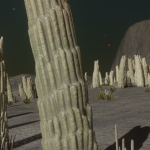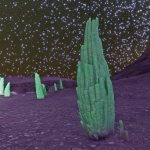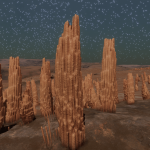Fungoida genus
Description
Organisms that live deep inside a planetary substrate. They share similar morphology to fungi but are not saprophytic, instead their mycelial body drives its metabolism through chemosynthetic and thermosynthetic processes. These are facilitated by the substrate which also protects the organism from environmental extremes. The exposed aspects of the organisms are primarily involved in reproduction. This is frequently through spore ejection, but certain species also support gaseous exchange with the atmosphere. Some fungoicla exhibit bioluminescent behaviours as part of a metabolic process involved in the breakdown of accumulated toxins.
Minimum distance between two genetic samples: 300 m
Conditions of occurrence
- Planets with thin atmosphere
- Maximum gravity: 0.27
| Atmosphere type | Species |
|---|---|
| Ammonia Methane, Methane-rich | Fungoida Setisis |
| Argon, Argon-rich | Fungoida Bullarum |
| Carbon dioxide Carbon dioxide rich (180 K - 195 K) Water, Water rich | Fungoida Gelata Fungoida Stabitis |
Fungoida bullarum
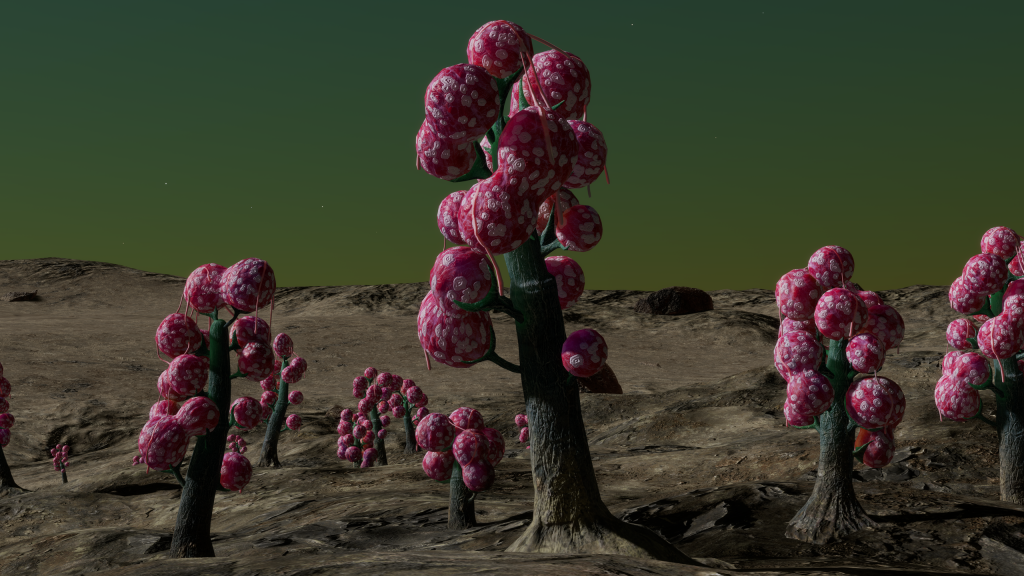
Description
A fungoida that features clusters of mottled bubble-shaped growths atop a central stalk. These contain spores that can be exposed to the winds to facilitate distribution.
Conditions of occurrence
- Planets with thin Argon or Argon-rich atmosphere
- Maximum gravity: 0.27
Colored variants
Colored variant determined by rare material found on planet:
| Material | Color |
|---|---|
| Antinomy | Red |
| Polonium | Mulberry |
| Ruthenium | Magenta |
| Technetium | Peach |
| Tellurium | Gold |
| Yttrium | Orange |
Fungoida gelata
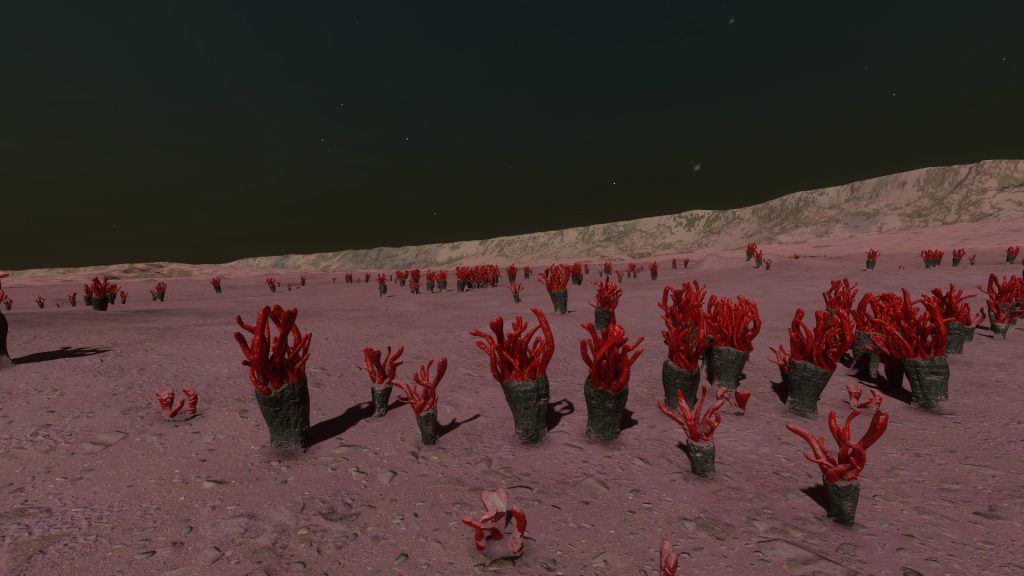
Description
This fungoida species resembles an upturned jellyfish, emerging from a solid base buried within the substrate. The exposed part is dominated by fleshy reproductive organisms that shed organic tissue. This tissue can float on the light breeze and form a new organism if it lands in the right location.
Conditions of occurrence
- Planets with thin Carbon Dioxide or Water atmosphere
- Maximum gravity: 0.27
- For Carbon Dioxide atmospheres, mean temperature between 180 K and 195 K
Colored variants
Colored variant determined by rare material found on planet:
| Material | Color |
|---|---|
| Cadmium | Cyan |
| Mercury | Lime |
| Molybdenum | Mulberry |
| Niobium | Green |
| Tungsten | Orange |
| Tin | Red |
Fungoida setisis
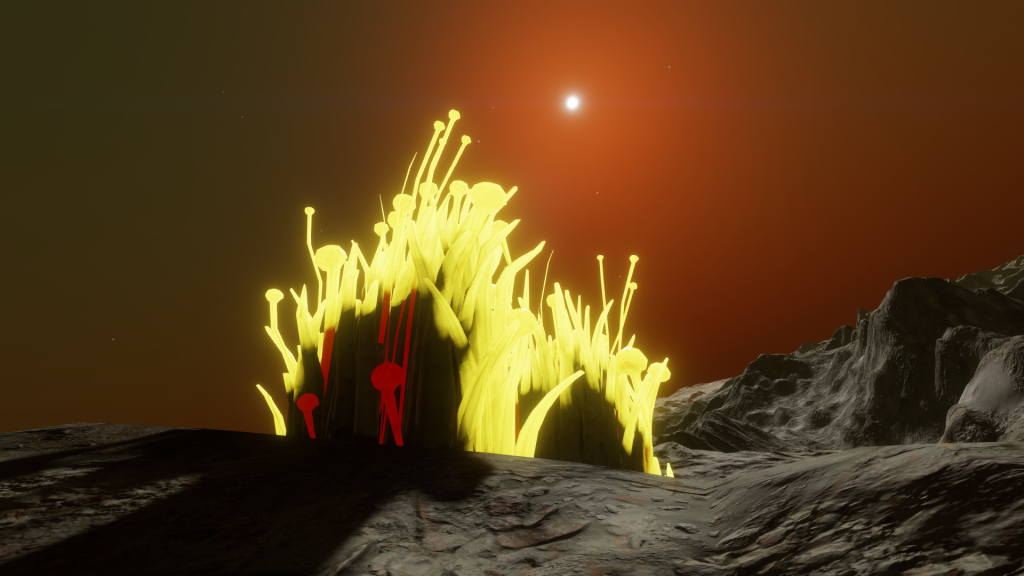
Description
This fungoida species produces vertical clusters interspersed with spore pods atop thin stalks. allowing them to break off and scatter to reproduce elsewhere.
Conditions of occurrence
- Planets with thin Ammonia or Methane atmosphere
- Maximum gravity: 0.27
Colored variants
Colored variant determined by rare material found on planet:
| Material | Color |
|---|---|
| Antinomy | Peach |
| Polonium | White |
| Ruthenium | Gold |
| Technetium | Lime |
| Tellurium | Yellow |
| Yttrium | Orange |
Fungoida stabilis
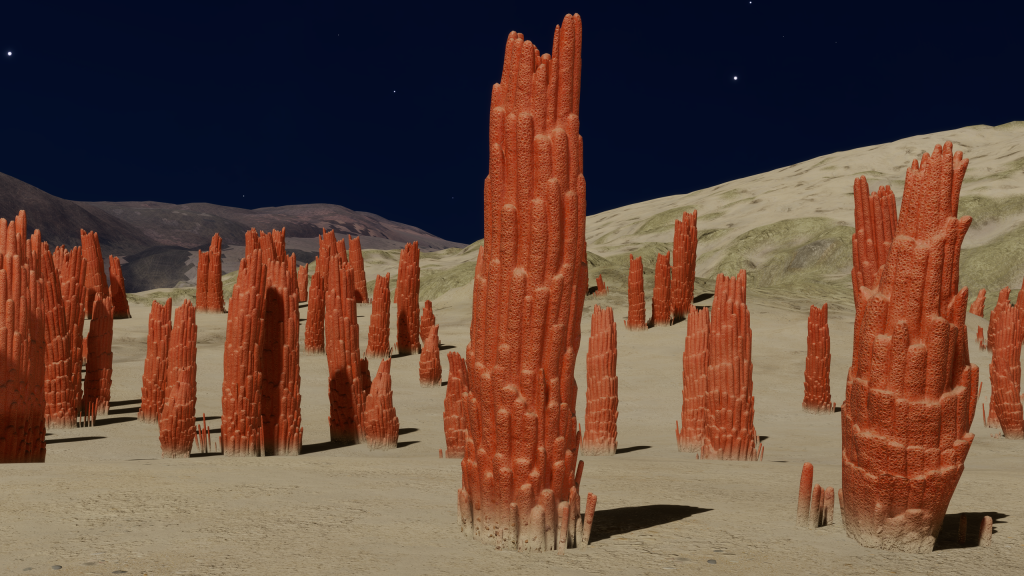
Description
A species of fungoida that thrives on geothermal energy. and can produce two-metre high tower structures composed of tightly clustered cylinders.
Conditions of occurrence
- Planets with thin Carbon dioxide or Water atmosphere
- Maximum gravity: 0.27
- For Carbon Dioxide atmospheres, mean temperature between 180 K and 195 K
Colored variants
Colored variant determined by rare material found on planet:
| Material | Color |
|---|---|
| Cadmium | Blue |
| Mercury | Green |
| Molybdenum | Magenta |
| Niobium | White |
| Tungsten | Peach |
| Tin | Orange |
